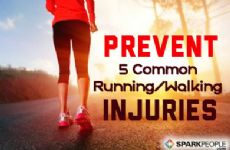|
You’re never too _______ to ________. There are countless ways to fill in the blanks. You’re never too slow to run. You’re never too heavy to do yoga. You’re never too weak to lift weights. And you’re never too old to start hiking. To the contrary, hiking is one of the most beneficial activities for seniors. According to a study published in the Journal of the American Geriatrics Society, men and women aged 65 and older who walked more than four hours per week were shown to have a reduced risk of heart disease than those who walked just one hour or less per week. And, according to the Centers for Disease Control and Prevention (CDC), older adults should get at least 150 minutes of moderate-intensity aerobic activity every week, and strength training activities at least two days per week. Aerobic activity can be classified as anything that gets your heart rate up—and that includes brisk walking and hiking. Jim Klopovic discovered backpacking after retirement and immediately fell in love. From the Appalachian Trail to the coasts of England, his adventures have led him to explore some of the world’s most beautiful locales, while also improving his physical health and connecting him with nature. Along with his daughter Nicole, Klopovic wrote “The Honest Backpacker: A Practical Guide for the Rookie Adventurer over 50” to inspire other baby boomers (and people of all ages) “to stay active, take the road less traveled and experience the wonders of the trail.” Above all, Klopovic believes that the key to happiness lies in nature, and that by venturing into the great outdoors, seniors can remain vigorous and capable of living their golden years to the fullest. Getting Started With the EssentialsOne of the best things about hiking is that you don’t have to spend a fortune on fancy hiking equipment and apparel to start reaping the life-enriching benefits of the trail. Klopovic recommends starting with these basic essentials, from the ground up.
Setting Realistic GoalsWhile there’s no such thing as “too old to hike,” let’s face it: Our bodies change as we age. With all else being equal, most people in their 60s, 70s or 80s most likely won’t have the same strength or stamina as someone in their 20s (with some exceptions, of course). To hike successfully through your golden years, the key is to strive for goals that are suited to your body’s capabilities. “Your overall goal should be to be vital and vigorous well into your 90s,” Klopovic says. “You want to be good at life, make memories and friends, have fun and make a difference.” When setting a hiking goal, it should feel challenging and maybe a tiny bit scary, but it shouldn’t send you into a state of near-panic or serious self-doubt. For instance, if you’re new to hiking, completing the Appalachian Trail is probably too lofty a goal to tackle. It’s best to start slowly with an easy or moderate trail—it’s a lot easier on the psyche to ramp up the difficulty level than it is to admit defeat and scale back down from a harder hike. Northwest Hiker offers this handy hike difficulty calculator to help you determine the toughness of a course. Enter the length of the hike and the total elevation gain (the steeper the incline, the harder it will be) and the calculator will rate the hike from easy to extreme, with varying levels of difficulty in between. Keeping It SimpleAt its core, hiking is a delightfully simple and undemanding activity. To keep it from getting complicated, Klopovic uses what he calls an S3 formula: simple, suitable, sustainable.
Safety Tips for Senior HikersTo ensure an enjoyable and injury-free experience on the trail, senior hikers should adhere to these safety tips:
|
Popular EntriesRelated Entries
More From SparkPeople
|
You're Never Too Old to Hike: Trail Tips for Seniors














.png)









